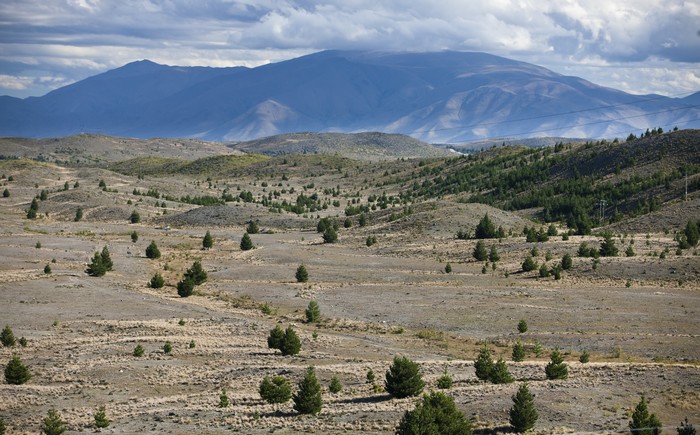Controlling wilding pines

New Zealand is undertaking one of the largest wilding pine control programmes in the world.
The spread of wilding pines threatens the ecology and economy of indigenous grasslands, scrublands and forests, especially in the South Island high country. Wilding pines are self-sown conifers originating from early forestry, shelterbelt and farm plantings. Around two million hectares in New Zealand are estimated to be infested.
The goal of wilding pine management is to limit future spread and reduce the extent of current infestations. Over the next decade, control operations will be carried out over large areas with various densities of wilding pines with over $100 million already allocated towards achieving this goal. The most efficient operational tool that New Zealand currently has to control dense wilding conifer infestations is aerial spraying of the ‘TDPA’ brew, which combines the herbicides Triclopyr, Dicamba, Picloram, and Aminopyralid into a single mixture at relatively high concentrations.
Herbicide persistence
Scion researchers have looked at the persistence of Triclopyr, Dicamba and Dicloram in soil, forest floor litter, sediment and water. They looked at three sites located in the Mackenzie Basin, Southland and the Hawke’s Bay following aerial spraying with TDPA. The goal was to quantify the amounts of herbicide present in the environment and the degradation over time to determine long-term impacts following application. Three sites sprayed as part of the National Wilding Conifer Control Programme between January 2018 and February 2019 were included in the trial set.
Their work showed that after two years, levels of Triclopyr, Picloram and Dicamba were below detection limits in soils. However, herbicides were detectable in the forest floor litter layer (mainly discarded needles) at all sites after two years. The general conclusion was that the levels of herbicides were below the thresholds that would be considered toxic to terrestrial fauna.
The highest concentrations of herbicides in water were detected on the day of spraying or following the first rainfall after spraying. Threshold standards were exceeded at one site after rainfall 13 days after spraying. A more intensive monitoring programme is required to determine whether these temporary fluctuations in herbicide concentrations had the potential to affect freshwater ecosystems.
Revegetation
The research showed that the persistence of herbicides in the forest floor litter had the potential to affect woody vegetation regeneration beneath controlled wilding stands. The researchers collected soil and forest floor litter from the sprayed Mackenzie Basin site and a nearby untreated site, one, six and 16 months after spraying. Subsequently they assessed germination rates of Pinus contorta (lodgepole pine, the most common wilding species) and indigenous plant seeds in the collected samples. Overall, they observed very poor germination rates for the P. contorta, including abnormal growth for those that did germinate, a typical indication of herbicide phytotoxicity. Even 16 months after spraying, the levels of herbicide were still high enough to cause needle curling, root deformities and lower seedling biomass in lodgepole pine.
The indigenous plants also fared poorly. By 16 months post-spraying, herbicide levels had dropped enough to not affect the germination or mortality of native seedlings, but some symptoms of toxicity could still be seen in manuka and twiggy coprosma plants.
The effects of residual herbicides in the decomposing needle litter could limit the resurgence of P. contorta for at least 16 months after spraying. However, this also has consequences for seeding or planting with natives as a restorative practice. To improve the chances of successful revegetation, it is suggested that restoration be delayed until at least two years after application of the TDPA brew.
Reversing the spread
Understanding the long-term effect of using herbicides in the environment is important to validate and inform best practice and to retain the licence to operate for chemical control of wildings. It also helps with developing management plans to prevent re-infestations, which include revegetation, ensuring the initial investment in control is not wasted and that ecosystems and landscapes are protected.
This work has been funded by the New Zealand Wilding Conifer Control Group and through the Sustainable Farming Fund, Ministry for Primary Industries.
